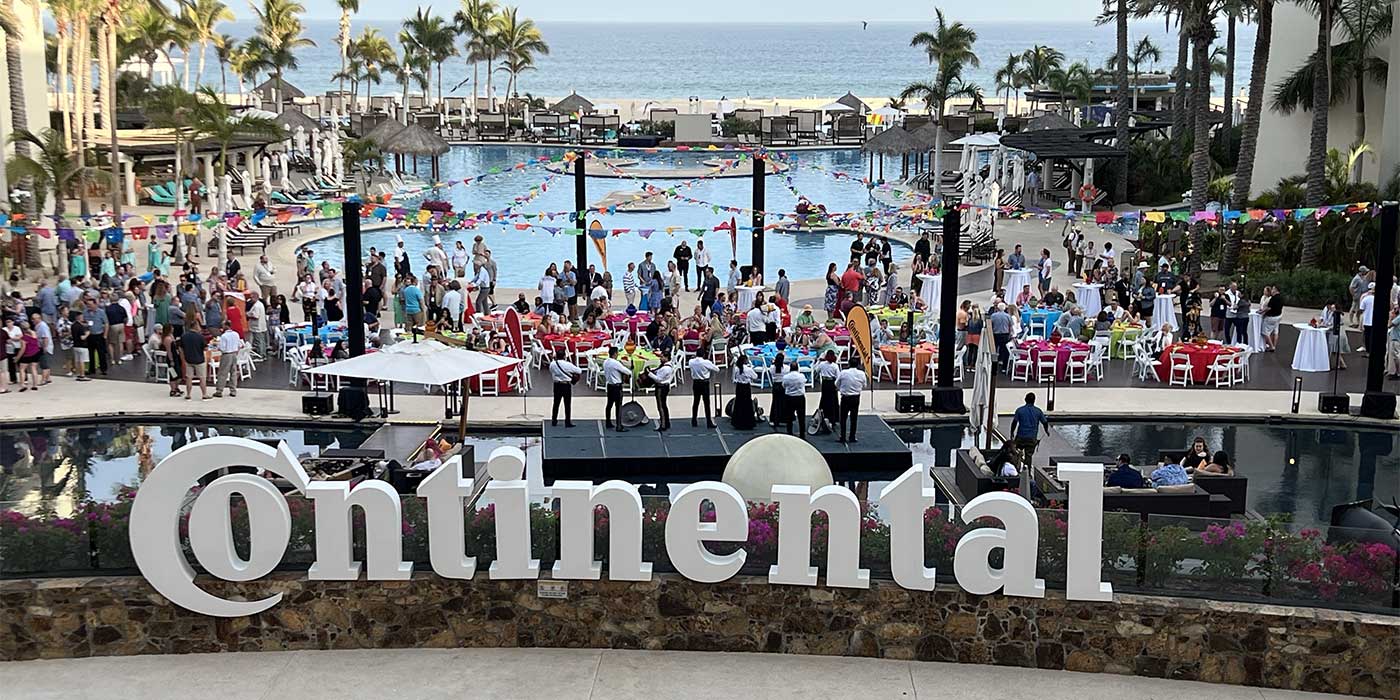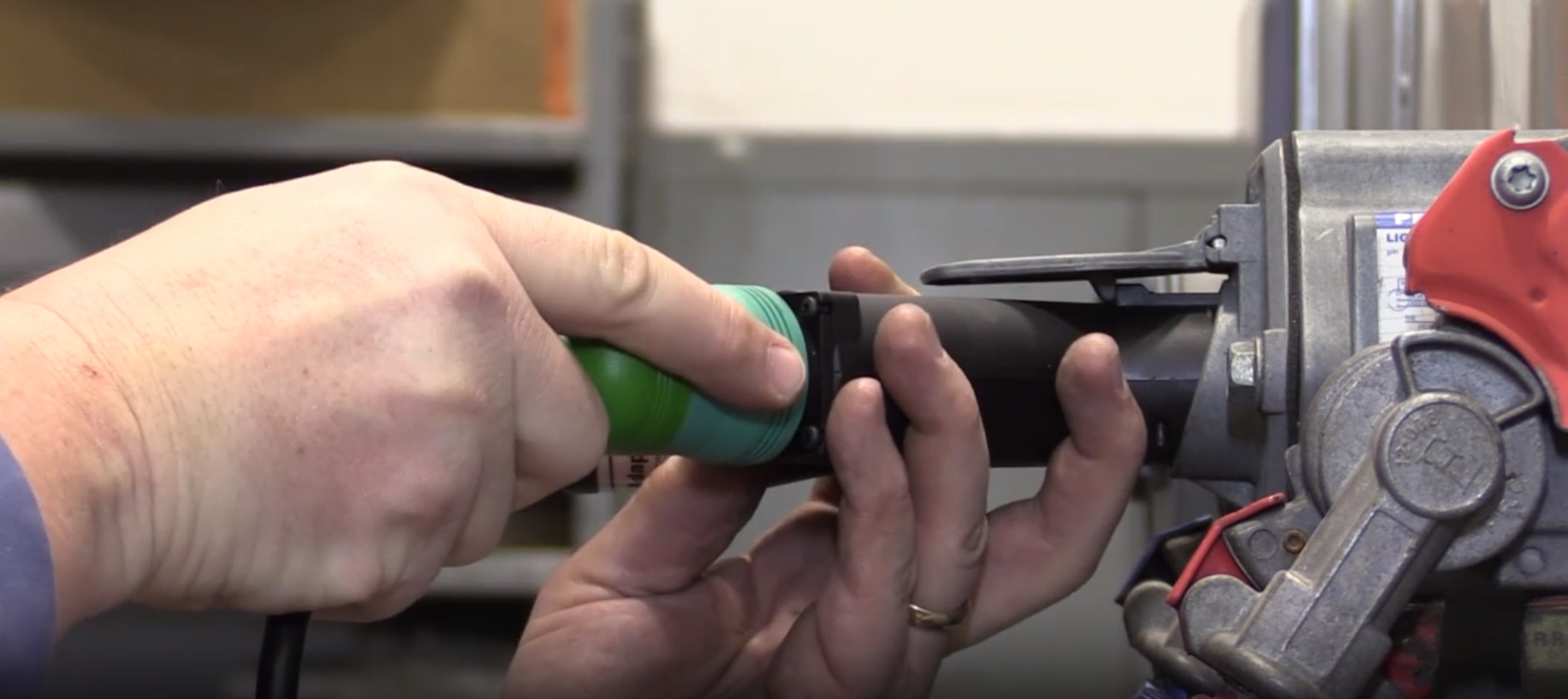You could say it all began about two years ago with a goal of reaching the Bonneville 200 MPH Club.
In the spring semester of 2005 at Utah Valley State College, Orem, UT, I taught a High Performance Engine Rebuilding class and thought that my 1969 Chevrolet El Camino and a land speed record goal would make an excellent project to involve the students. This story retraces the challenges and successes we had along the way to that goal.
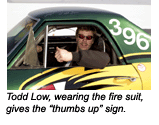 We started out with five areas on the vehicle and five student teams. This worked great for about three weeks, but after our first major setback, a lot of the students werent able to stick it out and see it through. I had about 12 or 13 students that continued on the project and their names have been added to the car.
We started out with five areas on the vehicle and five student teams. This worked great for about three weeks, but after our first major setback, a lot of the students werent able to stick it out and see it through. I had about 12 or 13 students that continued on the project and their names have been added to the car.
The first major challenge we faced involved the El Camino being classed as a truck or car. The SCTA (Southern California Timing Association) made a ruling that the El Camino was now in the car coupe class, not the truck class. This meant that the record we had to beat was 225 mph. Reaching that kind of speed with our small block engine would just cost way too much money and would probably not happen. The good part of our story is that the students that stayed on found an opening in the record books if we had a bigger engine. The speed record for that class was only 130 mph, and the students were excited because they felt we would be able to top that and get in the record books. So, I decided to go with a big block engine.
The other major challenge was the body work! The El Camino was rusted out, dented and just plain damaged all the way around. Once we got the Collision Repair Department at UVSC to help us, things improved. The rear quarters were completely replaced along with one door skin and numerous patch panels in the fenders. It took a couple different collision classes and instructors to turn it into the great looking car that it is today.
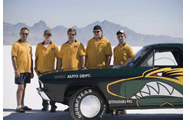 With the body work underway, lets get back to the engine and amount of horsepower needed to move a 69 El Camino through the air and reach our goal of 200 mph. Some students did research on a virtual wind tunnel and determined we needed nearly 700 actual horsepower to push that car at that speed. That is a lot of horsepower to make on our $6,000 budget, so we had a contest in the class called Engine on a Budget. The competition went something like this
With the body work underway, lets get back to the engine and amount of horsepower needed to move a 69 El Camino through the air and reach our goal of 200 mph. Some students did research on a virtual wind tunnel and determined we needed nearly 700 actual horsepower to push that car at that speed. That is a lot of horsepower to make on our $6,000 budget, so we had a contest in the class called Engine on a Budget. The competition went something like this
Each student had to research and build his own engine on desktop Dyno to see who made the most horsepower. The restrictions were it had to be a Chevy engine more than 501 CID, normally aspirated and carbureted and they had to prove how much they spent on parts and couldnt be more than $6,000 dollars. This challenge brought all kinds of suggestions to class and really helped in the design of our race motor. Josh Rich won the contest; his design was more than 800 hp, and he only went over the budget by a couple hundred dollars.
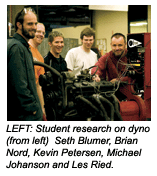 As a class, we plowed and worked our way through many different challenges and problems in the build up of our land speed car. Most of the problems were based on budget constraints, such as gaining a slightly narrowed Ford 9rear axle in a 69 El Camino. We also needed a lock up torque converter in an old car, race rims, race tires, roll bars and fire suppression systems. The spring semester came and went and we still did not have a car ready or even running yet. After a brief break to secure more funding for this project, our UVSC race team got together again on August 7th. To get the car ready for Bonnevilles Speed Week, we had to work in shifts and some students worked mornings, some evenings. When the first day of technical inspection for Speed Week (Saturday, August 12) came and went, we still hadnt even started the car and the pressure was on! Some of the challenges we faced were: headers not fitting, brake booster too big, master cylinder lines different, hose sizing, throttle linkage issues and the parachute mount, as well as the cable to open it. The fire suppression bottle and mounts and nozzles also were a new experience to our race team. We found that there are around 75 safety systems that all had to be built, bought, installed, adjusted or just plain accounted for.
As a class, we plowed and worked our way through many different challenges and problems in the build up of our land speed car. Most of the problems were based on budget constraints, such as gaining a slightly narrowed Ford 9rear axle in a 69 El Camino. We also needed a lock up torque converter in an old car, race rims, race tires, roll bars and fire suppression systems. The spring semester came and went and we still did not have a car ready or even running yet. After a brief break to secure more funding for this project, our UVSC race team got together again on August 7th. To get the car ready for Bonnevilles Speed Week, we had to work in shifts and some students worked mornings, some evenings. When the first day of technical inspection for Speed Week (Saturday, August 12) came and went, we still hadnt even started the car and the pressure was on! Some of the challenges we faced were: headers not fitting, brake booster too big, master cylinder lines different, hose sizing, throttle linkage issues and the parachute mount, as well as the cable to open it. The fire suppression bottle and mounts and nozzles also were a new experience to our race team. We found that there are around 75 safety systems that all had to be built, bought, installed, adjusted or just plain accounted for.
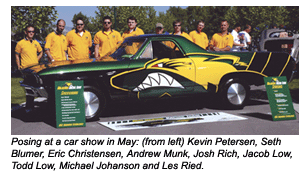 When we finally tried to start the car on Saturday evening, the pistons actually hit the spark plugs, damaging five of the eight. Another problem was we had 20 PSI fuel pressure going into our Holley carburetor and that was just too much! On Sunday, after running a completely new return line and getting fuel pressure down, along with new spark plugs, we were able to run the engine just before midnight. On Monday, August 14, those of us who could go were leaving for Bonneville that is if the new transmission, rear end, brakes and everything else worked! By noon that day, we drove the car out of the shop and down the road an event that was very exciting for us! And yes, the neighborhood heard it (and us) as well. We loaded the car on one trailer and more than half of the shop and tools on the other trailer so that we could fix anything we forgot (good thing too). By 4:00 p.m. Monday, we were on the road to the Bonneville Salt Flats. We arrived about one hour before the pits closed at 8:00 p.m., but luckily, we made it!
When we finally tried to start the car on Saturday evening, the pistons actually hit the spark plugs, damaging five of the eight. Another problem was we had 20 PSI fuel pressure going into our Holley carburetor and that was just too much! On Sunday, after running a completely new return line and getting fuel pressure down, along with new spark plugs, we were able to run the engine just before midnight. On Monday, August 14, those of us who could go were leaving for Bonneville that is if the new transmission, rear end, brakes and everything else worked! By noon that day, we drove the car out of the shop and down the road an event that was very exciting for us! And yes, the neighborhood heard it (and us) as well. We loaded the car on one trailer and more than half of the shop and tools on the other trailer so that we could fix anything we forgot (good thing too). By 4:00 p.m. Monday, we were on the road to the Bonneville Salt Flats. We arrived about one hour before the pits closed at 8:00 p.m., but luckily, we made it!
Now, remember the 75 safety items of tech inspection? They all had to be inspected and passed off. On Tuesday at sun-up, we went to work finishing the leftover safety items and mounting the race tires and moon discs.
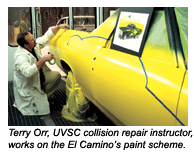 We made it to tech inspection just after noon on Tuesday, and then the problems started all over again. Even though we thought we had gone over every item on the checklist, the tech inspectors found things we hadnt. And its a good thing because theres a reason for every safety item on that checklist.
We made it to tech inspection just after noon on Tuesday, and then the problems started all over again. Even though we thought we had gone over every item on the checklist, the tech inspectors found things we hadnt. And its a good thing because theres a reason for every safety item on that checklist.
The chief inspector decided to let us run, but limited my speed to 150 mph. I was excited because I knew if we went any speed more than 130 mph, we would get a record. On Wednesday morning, we finished the safety items we could, bought our race gas and got in 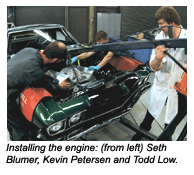 line to run. Excitement was building as we slowly got closer to the front of the line; there were about 15 cars ahead of us when the racing stopped due to a small wind. A small wind while youre driving at high speeds can cause a serious threat or danger, so we all just hoped that it would die down soon, but it didnt. What a disappointment all those people to watch and participate and we didnt even get to run. The good thing was we were near the front of the line for Thursday morning. Thursday morning came and with a skeleton crew, we raced 151 mph! Because that was a record, we had to take the car to impound and leave it there until Friday morning when we had to make a second run so they could average our speed and qualify it for the record. We got the record at 151.7 mph under the class Classic Gas Coupe with AA engine size. So, well see you in the record books!
line to run. Excitement was building as we slowly got closer to the front of the line; there were about 15 cars ahead of us when the racing stopped due to a small wind. A small wind while youre driving at high speeds can cause a serious threat or danger, so we all just hoped that it would die down soon, but it didnt. What a disappointment all those people to watch and participate and we didnt even get to run. The good thing was we were near the front of the line for Thursday morning. Thursday morning came and with a skeleton crew, we raced 151 mph! Because that was a record, we had to take the car to impound and leave it there until Friday morning when we had to make a second run so they could average our speed and qualify it for the record. We got the record at 151.7 mph under the class Classic Gas Coupe with AA engine size. So, well see you in the record books!
For more on the Bonneville 200 MPH Club and Salt Flats racing, visit the following websites:
- www.bonneville200mph.org
www.saltflats.com
Story and Photos: By Todd Low, UVSC
Associate Professor, Automotive Technology

